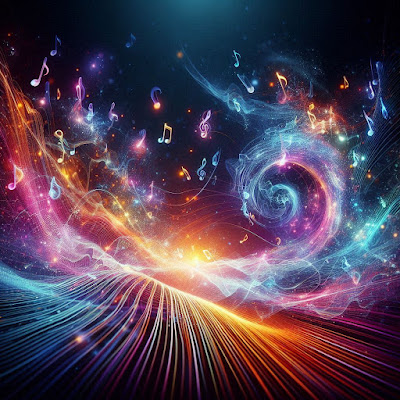In the vast cosmic arena, the fundamental nature of existence is often perceived through the lens of matter. We look around and see solidity, weight, and form—the tangible manifestations of our reality. Yet, beneath this illusion of permanence lies a more profound truth: the universe is not merely a collection of objects, but a magnificent dance of energy.
The Illusion of Matter
At first glance, we perceive the world through our senses, interpreting it as a conglomeration of physical entities—stars, planets, trees, and our own bodies. However, as we delve deeper into the fabric of reality, we begin to realize that what we perceive as matter is merely energy organized in intricate patterns. The ancient Greek philosopher Heraclitus asserted that "everything flows," and indeed, everything in the universe is in a constant state of flux, vibrating with energy.
The groundbreaking discoveries of modern physics have illuminated this truth. At the atomic level, matter is composed of particles: electrons, protons, and neutrons. But even these building blocks are not as solid as they appear. Instead, they are manifestations of energy. Electrons, for instance, exist not as fixed entities but as probability waves—a concept brought forth by quantum mechanics. In this framework, the boundary between matter and energy becomes increasingly blurred.
Energy: The Essence of Existence
Energy, as we understand it, is the ability to do work, to effect change, and to manifest potential. From the brilliant luminosity of a star to the gentle warmth of a sunrise, energy weaves through the very fabric of our cosmos. The renowned physicist Albert Einstein famously distilled this relationship in his equation E = mc2, positing that mass and energy are interchangeable; they are different forms of the same essence.
This principle can be observed in the life cycle of stars. In their core, hydrogen atoms fuse to form helium, releasing immense amounts of energy that illuminate the cosmos. When these stars reach the end of their life, they explode in supernovae, dispersing their elemental material throughout space, enriching the cosmos with the building blocks for new stars, planets, and even life itself. In this grand cycle, energy transforms into matter and back again, revealing an underlying unity in the chaotic splendor of the universe.
A Cosmic Tapestry
Our universe is a tapestry of interconnected energy fields, resonating at various frequencies. Each atom, each molecule, and each organism vibrates with a distinct energy signature, contributing to the intricate symphony of existence. This vibrational nature of energy is not just a scientific curiosity; it is a philosophical awakening. It reminds us that we are not isolated beings but part of a greater whole, intimately connected to the cosmos.
Consider the phenomenon of quantum entanglement, which suggests that particles can become linked, such that the state of one instantly influences the state of another, regardless of distance. This phenomenon challenges our conventional notions of locality and separation, inviting us to contemplate the profound interconnectedness of all things. In a universe where everything is energy, we begin to see ourselves not as mere observers but as active participants in the cosmic dance.
The Energy of Consciousness
Our consciousness, too, is an expression of energy. The thoughts, emotions, and intentions we experience are vibrational patterns that ripple through the cosmos. The Tibetan Buddhist philosophy emphasizes the interconnectedness of all beings, positing that our thoughts can impact the universe. This notion echoes the scientific understanding that energy influences matter, suggesting that our conscious experience is not merely a byproduct of biological processes but an integral part of the universal symphony.
As we reflect on our place within this grand design, we may be inspired to cultivate a sense of responsibility. If the universe is composed of energy, and we are manifestations of that energy, then our actions resonate beyond the immediate moment. We can choose to emit vibrations of compassion, creativity, and understanding, fostering a more harmonious existence within ourselves and the world around us.
Embracing the Cosmic Perspective
In the words of Carl Sagan, "We are the stuff of stars." This poetic insight encapsulates the notion that we are fundamentally woven from the same cosmic fabric that constitutes the universe. Embracing this perspective invites us to transcend the superficial boundaries that separate us. When we recognize that we are made of energy, we begin to perceive the universe not as a series of isolated events but as an intricate web of interconnected experiences.
In conclusion, the universe is not merely a collection of matter; it is a vibrant tapestry of energy, constantly transforming and evolving. By embracing this understanding, we unlock the door to a deeper appreciation of our place in the cosmos. We are not separate from the universe; we are an integral part of its grand design, resonating in harmony with the symphony of existence. Let us celebrate this unity and strive to contribute our unique melodies to the cosmic song, for in doing so, we honor the very essence of our being.

Comments
Post a Comment